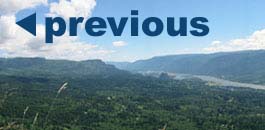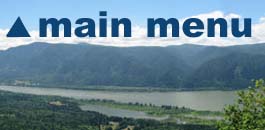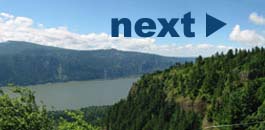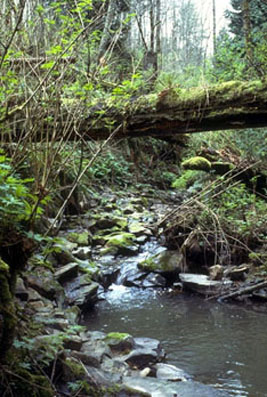
2.
There are native cutthroat trout in Balch Creek.
I love Portland's urban greenspaces. We are very close to Forest Park, called America's largest urban forest. Our house in Northwest Portland sits just one house back from a bank that precipitately slopes down to Balch Creek, which runs through a piece of Forest Park called Macleay Park. Balch Creek was the original source of drinking water for the City of Portland in its infancy. The population soon outgrew that source, and in 1895 Portland began drawing its water from the Bull Run watershed in the foothills of Mt Hood.
One of the visionaries responsible for the creation of Forest Park was the Reverend Thomas Lamb Eliot, who arrived in Portland in 1867 to lead the First Unitarian Church. He was instrumental in 1899 in forming the Municipal Park Commission of Portland, which commissioned a park plan by the Olmstead brothers in 1903. The idea for Forest Park came out of that plan.
Balch Creek is home to native cutthroat trout. They are isolated, because right below the Thurman Street bridge, the creek flows through a weir into a huge pipe that carries it under the industrial area for a couple of miles to reach the Willamette River.
There is a trail that follows wild Balch Creek up into the canyon. It is the Wildwood Trail, one of the loveliest trails in Portland, and also one of the most used. It takes you past old Douglas firs three feet in diameter. Unleashed dogs are a problem along this trail; they are hard on the trout and the landscape.
The little stretch shown at the right has been paved for wheelchair access; above this point the trail is unpaved.
This is a side story about Balch Creek. When Scott and I married and moved to Portland from Ithaca in 1976 we lived for a year in a cottage on Balch Creek, three miles upstream from where we live now. The picture on right was taken next to the creek.
In those days we had no car. Every morning Scott would ride his bike seven miles over the hill to work at Tektronix in Beaverton, where he was designing oscilloscope. I stayed on Balch Creek watching the unfamiliar Oregon wildflowers come up, reading Annie Dillard and trying to write short stories.
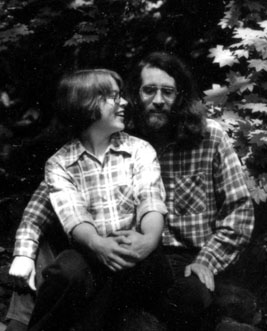
On Tuesdays I would prepare bread dough and leave it to rise while I rode my bicycle down Cornell Road into Portland to do our laundry. I hauled our clothes down and back in a granny cart strapped to my bike. On Thursdays I rode in to buy our groceries.
Our year on Balch Creek was lovely, but it was isolated, too, and it taught us that we are city people at heart. When our landlady decided she wanted to live in our house, we took stock of our options and decided to move downstream into town.

We love canoeing in Portland. The northernmost tip of the city lies at the confluence of the Willamette and Columbia Rivers, and near there are numerous wetlands, lakes and waterways that are perfect for blue herons, cormorants, eagles, and beavers. We especially love the Columbia Slough, a funny little waterway hemmed in along most of its length with industrial development and rail lines. When you are on the slough in a canoe, it's as though you've entered another world.
Recently Portland Metro area voters passed a second greenspaces initiative. This will let our Metro regional government buy and protect even more greenspaces in the region.
If urban greenspaces interest you, visit www.urbangreenspaces.org.
